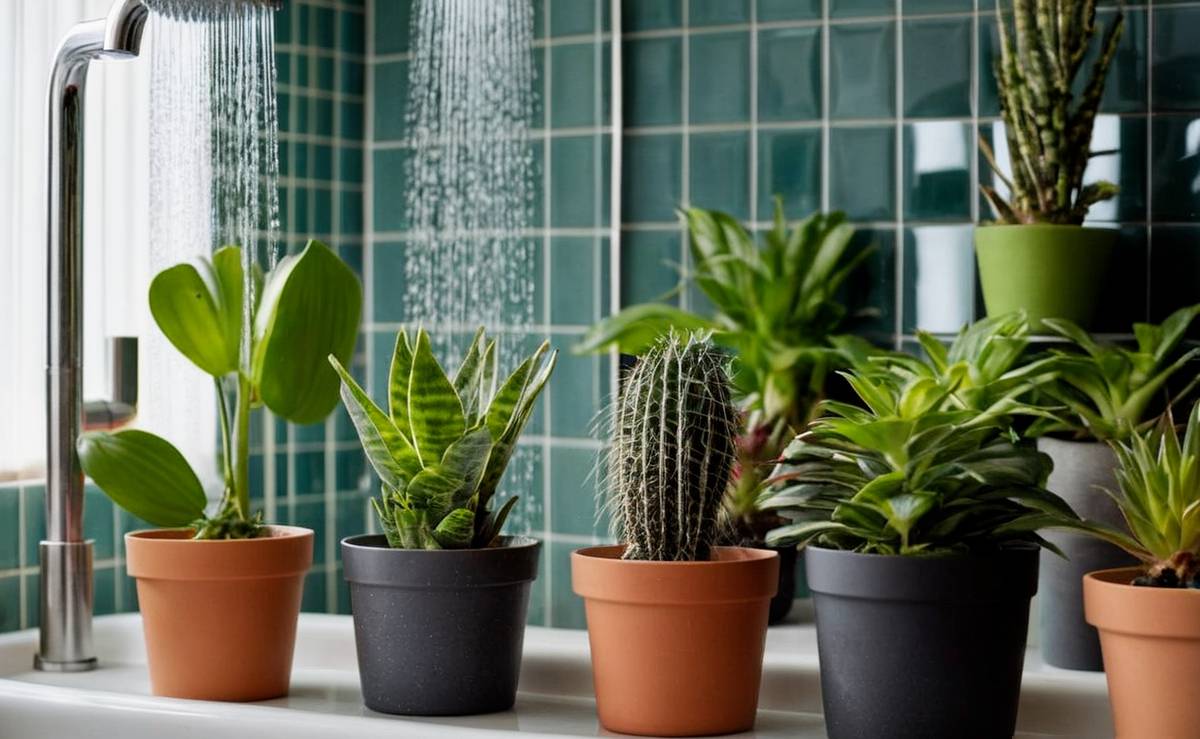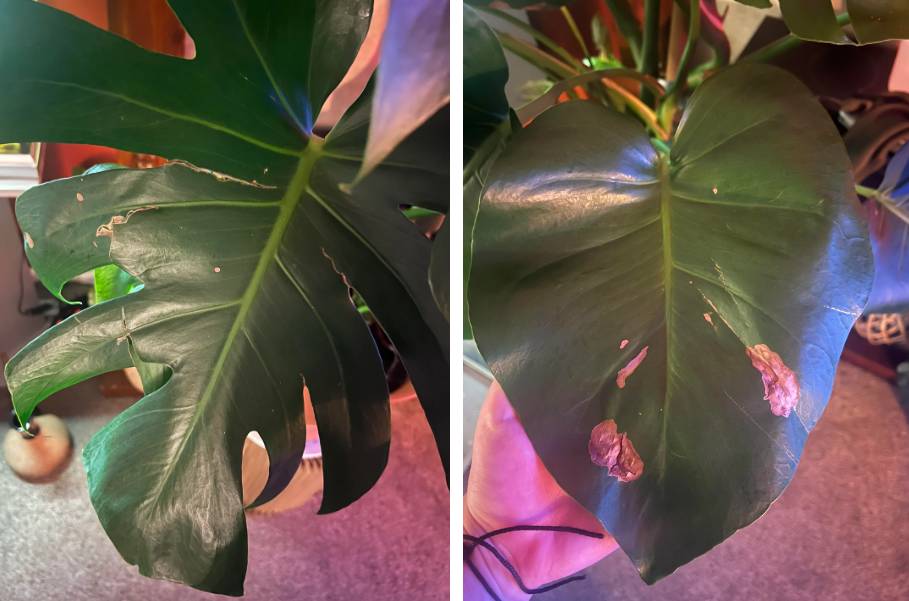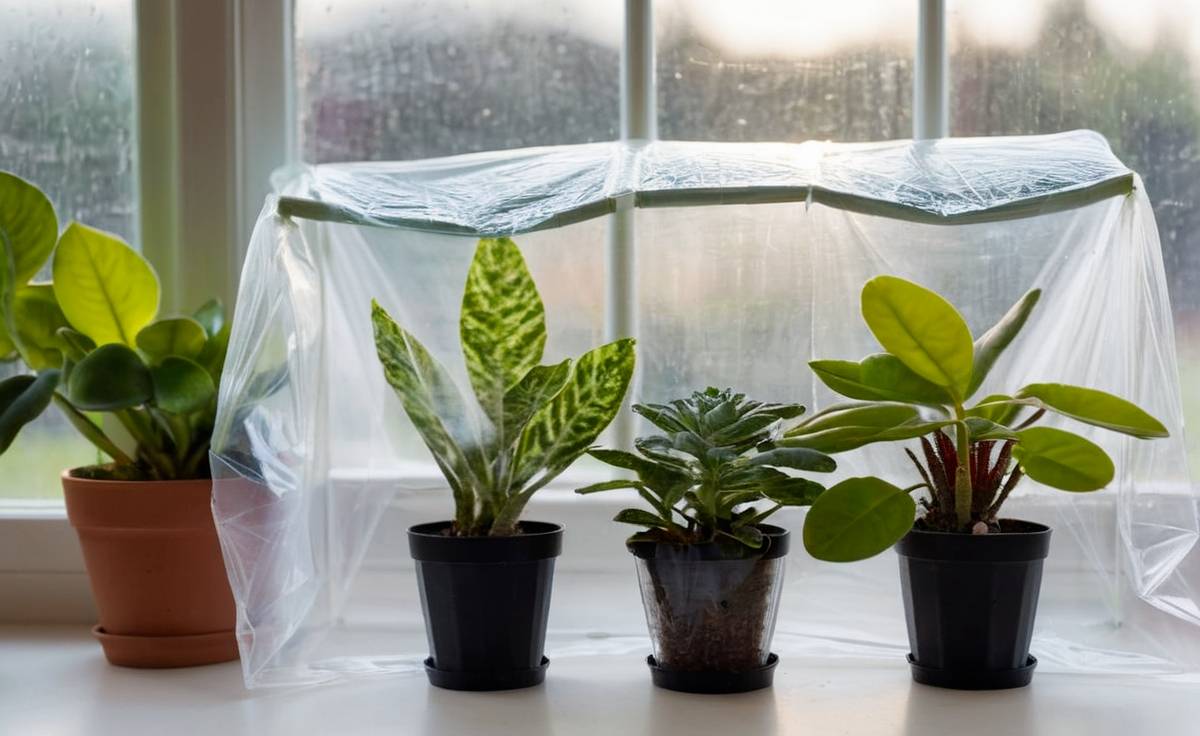
As an avid gardener, I often chuckle to myself when fellow indoor plant parents gripe about their “fussy” plants dropping leaves whenever the humidity drops below 60%. While tropical foliage plants like ferns definitely appreciate high humidity, with a little trial and error most houseplants can adjust to average home conditions.
Take it from this plant mom – I once killed no fewer than three dracaenas in a single month due to my own neglect. Either I was underwatering during long workdays or blasting the heat without increasing humidity. My plants were NOT having it. Finally, I realized my plant friends needed more TLC if we were going to survive the winter indoors together.
In this article
The Effects of Low Humidity

Plants lose moisture through their leaves via transpiration. In very dry indoor air, the rate of transpiration increases as plants try to replenish lost water. If humidity levels drop too low, some plants may respond by curling or crisping their leaves as a drought response mechanism. Over time, chronic low humidity can lead to leaf drop and stunted growth.
The top signs your houseplants are suffering from insufficient humidity include:
- Crispy or curly leaf edges: Ferns, peperomias, calatheas and other tropical foliage plants are very prone to dehydrated edges when humidity dips below 40%.
- Brown or yellow leaf tips: Whole leaf browning or tip burning points to a moisture imbalance for plants like philodendrons, pothos and peace lilies.
- Premature leaf drop: Some tropicals like Dracaena and Dieffenbachia may eventually shed lower leaves if humidity stays too low for too long.
- Stunted growth: Plants struggle to fully hydrate themselves and prioritize survival over adding new growth.
On the other hand, succulents and cacti evolved to withstand dry conditions. For these plants, excessively high humidity poses more risks like rot. Most other popular houseplants like Snake plants, ZZ plants and Chinese evergreens can adapt to average indoor humidity levels around 30-50%.
How to Increase Indoor Humidity
There are several effective methods for controlling humidity levels around your plant collection. Monitoring humidity with a hygrometer is key to determining when action needs to be taken. Here are some options:
Group plants together: Organizing tropical foliage plants in close clusters allows them to collectively raise localized humidity through transpiration. This mimics their natural forest floor environment.
Use pebble trays: Fill low trays or saucers with pebbles and set houseplants on top. Add just enough water to come barely below the pebbles’ surface. As water evaporates upward, humidity around plants increases.

Cool Mist Humidifier for Home Plant and Baby Nursery, Quiet Ultrasonic Humidifier with 360° Nozzle, Auto Shut-Off, Filterless, Black
Run a humidifier: Cool mist humidifiers introduce moisture into dry air without raising the overall temperature. Use a hygrometer to maintain 40-60% humidity for sensitive tropicals.
Set out water features: Trickling or still water features like fountains release humidity into their surroundings. Small tabletop models work well indoors.
Mist foliage: Lightly spritzing leaves with a spray bottle provides a temporary moisture boost. Only mist when light is low to avoid splash-induced foliage disease.
With careful attention to humidity levels specific to each plant’s needs, indoor gardeners can enjoy beautifully green houseplants even in the most challenging indoor environments. I hope these tips help give your green friends the moisture they require to flourish!
Simple and fun humidity hacks you can try

Rather than complicated rigs of tubes and wires like Homer Simpson might dream up, I found simple hacks worked best.
- The saucer hack – Turn those ugly plastic saucers under your plant pots into mini humidity oases. Fill with pebbles and just enough water to come below the surface. The water will evaporate up to keep your plants happy.
- The shower trick – Bring a few leafy amigos into the bathroom while you shower to enjoy the natural steam party. Just be sure to wipe down leaves afterward so they don’t stay wet long.
- The plastic wrap dome – Cover pots of newly wilted plants in a layer of plastic wrap like a mini greenhouse. Check daily so it doesn’t become a sauna in there. The trapped humidity should perk the leaves back up.
- The propagation station – Cluster cuttings together in a clear container with moist sphagnum moss. Seal with plastic wrap and enjoy nature’s own humid mini greenhouse right on your windowsill.
- The kitchen caboodle – Group pots of plants that need moisture on the counter near your cooking. They’ll happily absorb humidity from steam, boiling water and dish washing.
- The lucky leather friend – Keep a pebble tray or two of plants near your ficus, palm or leatherleaf foliage. They’re like little humidity generators for their neighbors.
Frequently Asked Questions
How often should I check my indoor humidity?
Twice daily monitoring is recommended when first establishing ideal conditions. Once your plants appear content, daily or every other day checks maintain balance.
Can tap water be used for humidifiers?
Generally yes, tap water is suitable. However, check your water report and replace filters regularly if your water contains excessive minerals. Distilled water results in fewer mineral deposits.
What plants are the most sensitive to low humidity?
Ferns, calatheas, peperomias and philodendrons along with tropical foliage varieties from below 35° latitude need 40-60% humidity to avoid leaf issues. Orchids require 50-70%.
What humidity level is considered safe to leave my home for 1-2 weeks?
For most houseplants 30-40% humidity is sufficient for short trips. Sensitive tropicals may benefit from an automated humidifier kept just above 40% or enlisting a trusted plant sitter.
With a balance of moisture and patience, even this brown thumb has succeeded in keeping her whole collection happy.
YOU MIGHT ALSO LIKE: Top 10 Herbs to Grow on Your Kitchen Counter
Happy gardening!







